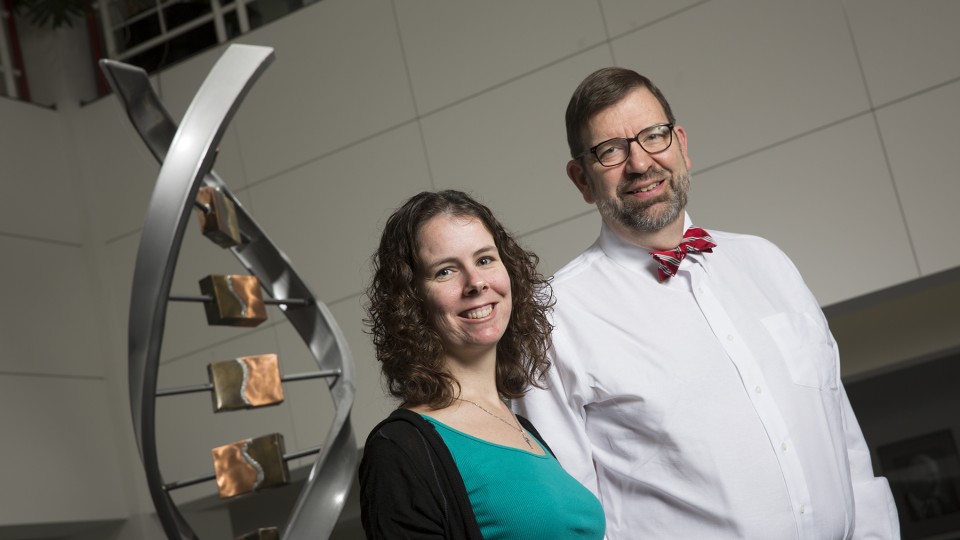· 4 min read
Physicists get surprising results from electron-molecule collisions

An experiment led by the University of Nebraska-Lincoln’s Tim Gay and Joan Dreiling has signaled the need for a more complete model of electron-molecule scattering, as reported in a new study published by the journal Physical Review Letters.
What exactly were they investigating?
Gay and Dreiling were looking to better understand how electrons — those elementary particles often found orbiting atoms – manage to break apart DNA (and other asymmetrical molecules) upon striking it. Billions of these electrons come hurtling through the atmosphere from space every second, representing one ingredient in the particle cocktail known as cosmic rays.
In 2014, the physicists helped validate a hypothesis that modern-day DNA exists only in right-handed form because the left-handed precursors of DNA would have been preferentially destroyed by the electrons that hail from space.
So DNA and particles have right and left hands? What does that mean?
It means that molecules can come in two asymmetrical forms that are mirror images of one another, much like our right and left hands. (In the case of DNA, its spiral staircase winds in opposite directions, depending on whether it is right-handed or left-handed.) As applied to electrons, handedness essentially means that they spin either in the same direction they are moving – making them right-handed – or in the opposite direction, qualifying them as left-handed.
Why does that matter?
As Gay and Dreiling illustrated in their 2014 study, left-handed electrons tend to destroy more left-handed molecules (including DNA) than do their right-handed counterparts, and vice versa. But in that study, the researchers found that the bias was very slight: If left-handed and right-handed electrons each struck 10,000 left-handed molecules, the lefty electrons might destroy just two more molecules than the right-handers would.
What does the new study show?
For one thing, it found a much larger molecule-breaking disparity between the like- and opposite-handed electrons. When Gay and Dreiling fired both electrons at a variant of camphor – the molecule that gives Vicks VapoRub its aroma — they discovered that the disparity jumped from two-in-10,000 molecules to about 20-in-10,000.
In the process, they investigated a few atom- and molecule-specific factors that might be responsible for the surprising result. Among the potential culprits: the number of positively charged protons residing in a molecule’s heaviest atom, with higher numbers leading to larger disparities between the two classes of electrons. But the researchers also found that shifting this heavy atom from the core of a molecule’s asymmetry to its distant fringes further increased the electron disparity, which Gay called a “really weird effect” that no current model of electron-molecule scattering can properly explain.
“The best that we can do (right now) to try to understand these effects is to construct really simple-minded models, but they don’t work well at all,” Gay said. “Our paper is sort of a complaint to the (physics) community that the theory’s in bad shape, and we need to be working harder on it.”
What might come from better understanding these collisions?
Along with clarifying the mechanics of DNA breakage – a phenomenon that contributes to certain types of cancer and other diseases – further knowledge could accelerate the pursuit of technological breakthroughs that researchers have eyed for decades.
“The next generation of energy-producing devices will probably be based on nuclear fusion, so there’s this long Holy Grail (quest) to get a fusion reactor going,” Gay said. “That involves a hot plasma, and plasmas are essentially just electrons scattering from atoms or ions or other atomic particles.
“Understanding the basics of these kinds of electron-molecule collisions is not only a fundamental physics problem. It’s got huge applications.”
The team’s research, which also involved physicists from Northumbria University (UK) and the Air Force Research Laboratory, received support from the National Science Foundation.







